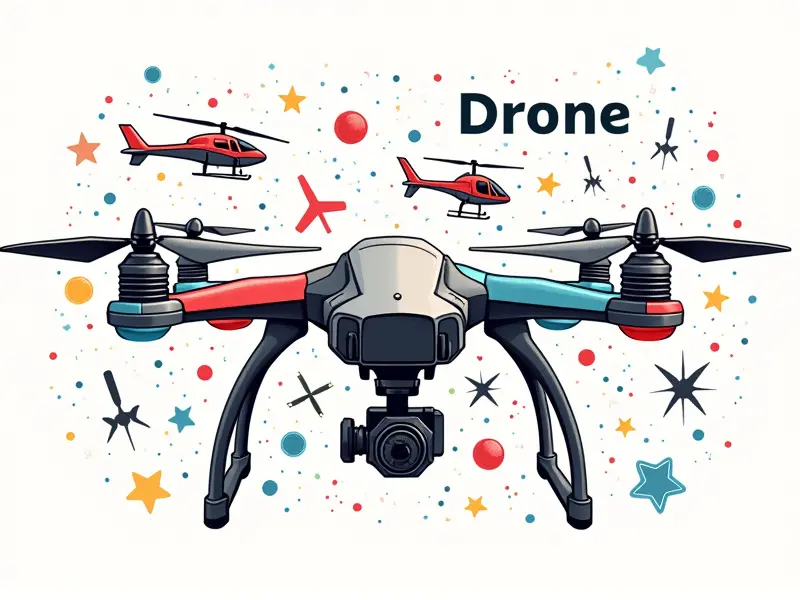How fast do RC helicopters fly?

The world of remote-controlled (RC) helicopters is full of excitement and technical marvels. One of the most intriguing aspects for enthusiasts is the speed at which these mini-helicopters can fly. In this article, we'll delve into the top speeds of RC helicopters, explore how fast they can really go, and uncover secrets to maximizing their flight performance.
Top Speeds of RC Helicopters Revealed
The speed at which an RC helicopter can travel varies widely depending on its design, power source, and aerodynamic features. For instance, some high-performance models can reach speeds that rival small-scale aircraft. Understanding the top speeds available in today's market is crucial for enthusiasts looking to push their RC helis to the limit.
How Fast Can RC Helis Really Fly?
The question on every RC helicopter enthusiast's mind is, "Just how fast can these things go?" The answer depends significantly on several factors including the model type, motor power, and propeller efficiency. High-performance models such as those designed for racing or aerobatics often feature advanced components that allow them to achieve impressive velocities.
Unleashing the Speed of RC Helis
To unlock the full potential speed of an RC helicopter, you need to consider several aspects including optimizing the motor and propeller setup. Fine-tuning these elements can dramatically increase your heli's top-flight velocity, making it faster than ever before.
Max Out Your RC Helicopter's Speed
Maximizing the speed of an RC helicopter requires a deep understanding of aerodynamics and mechanical engineering principles. By tweaking factors like blade pitch, motor RPMs, and overall weight distribution, you can achieve significant performance gains in terms of flight speed.
The Fastest RC Helicopters on Market
Several manufacturers produce some of the fastest RC helicopters available today. Brands such as Blade and Emax offer models that are specifically designed for high-speed racing and aerobatic performances, boasting impressive top speeds and agile maneuverability.
Blade 450X
- Top Speed: Up to 60 mph (97 km/h)
- Aerodynamics: Optimized for high-speed flight with adjustable blade pitch and powerful motor
- Features: Built-in telemetry, brushless motor system
Emax X22
- Top Speed: Up to 50 mph (80 km/h)
- Aerodynamics: Lightweight frame with carbon fiber blades for enhanced speed and stability
- Features: Brushless motor, integrated GPS system
Boosting RC Helicopter Flight Speeds
To boost the flight speeds of your RC helicopter, there are several modifications you can make. Upgrading to lighter materials for the frame and components, optimizing propeller design, and enhancing motor power output are key strategies that can significantly increase performance.
Lightweight Frame Materials
- Carbon Fiber: Reduces overall weight while maintaining structural integrity
- Fiberglass: Provides a balance between strength and lightweight construction
Propeller Design Optimization
Enhancing the aerodynamics of your propellers through design modifications can improve thrust efficiency, leading to faster flight speeds. This includes adjusting blade pitch angles for optimal performance at high RPMs.
Achieving Maximum Speed with RC Helis
To achieve maximum speed with an RC helicopter, it's essential to fine-tune every aspect of its operation—from motor settings to propeller efficiency and aerodynamic design. By implementing these adjustments, you can push your heli beyond its standard performance limits.
Motor Settings Adjustment
- RPM: Increasing the RPM (Revolutions Per Minute) within safe operational limits enhances thrust output
- Voltage: Optimizing battery voltage for maximum power delivery without compromising safety
Racing RC Helis: Max Speed Explained
In the realm of RC helicopter racing, reaching and maintaining high speeds is paramount. Understanding how to maximize your heli's speed involves mastering techniques such as optimal throttle control, precise altitude management, and efficient navigation through race courses.
Throttle Control Techniques
- Smooth Transitions: Gradually increasing and decreasing throttle for smoother acceleration and deceleration
- Torque Compensation: Adjusting control inputs to counteract torque effects during high-speed maneuvers
Secrets to Maximizing Your RC Helo's Speed
Unlocking the full speed potential of your RC helicopter requires a combination of technical knowledge and practical experience. Experimentation with different setups, understanding aerodynamics principles, and leveraging advanced technology are key to achieving maximum speeds.
Aerodynamic Principles
- Lift: Optimizing lift generation through blade design and pitch angle adjustments
- Drag Reduction: Minimizing drag by reducing unnecessary weight and improving airframe smoothness
Factors Affecting RC Helicopter Speed
Several factors influence the speed of an RC helicopter, including motor power, propeller efficiency, aerodynamics, and overall weight. Understanding these elements is crucial for optimizing performance.
Motor Power
- Battery Capacity: Higher capacity batteries provide more sustained power output
- Motor Type: Brushless motors offer better efficiency and higher RPM capabilities compared to brushed motors
Propeller Efficiency
The design of the propellers plays a critical role in determining how efficiently an RC helicopter can convert motor power into forward thrust. High-efficiency propellers are designed for maximum aerodynamic performance.
RC Helicopter Speed Demystified
In conclusion, achieving top speeds with your RC helicopter involves a combination of selecting the right model, optimizing mechanical components, and understanding aerodynamics principles. With the right setup and techniques, you can unlock impressive flight speeds that will amaze and thrill both novice and seasoned pilots alike.

